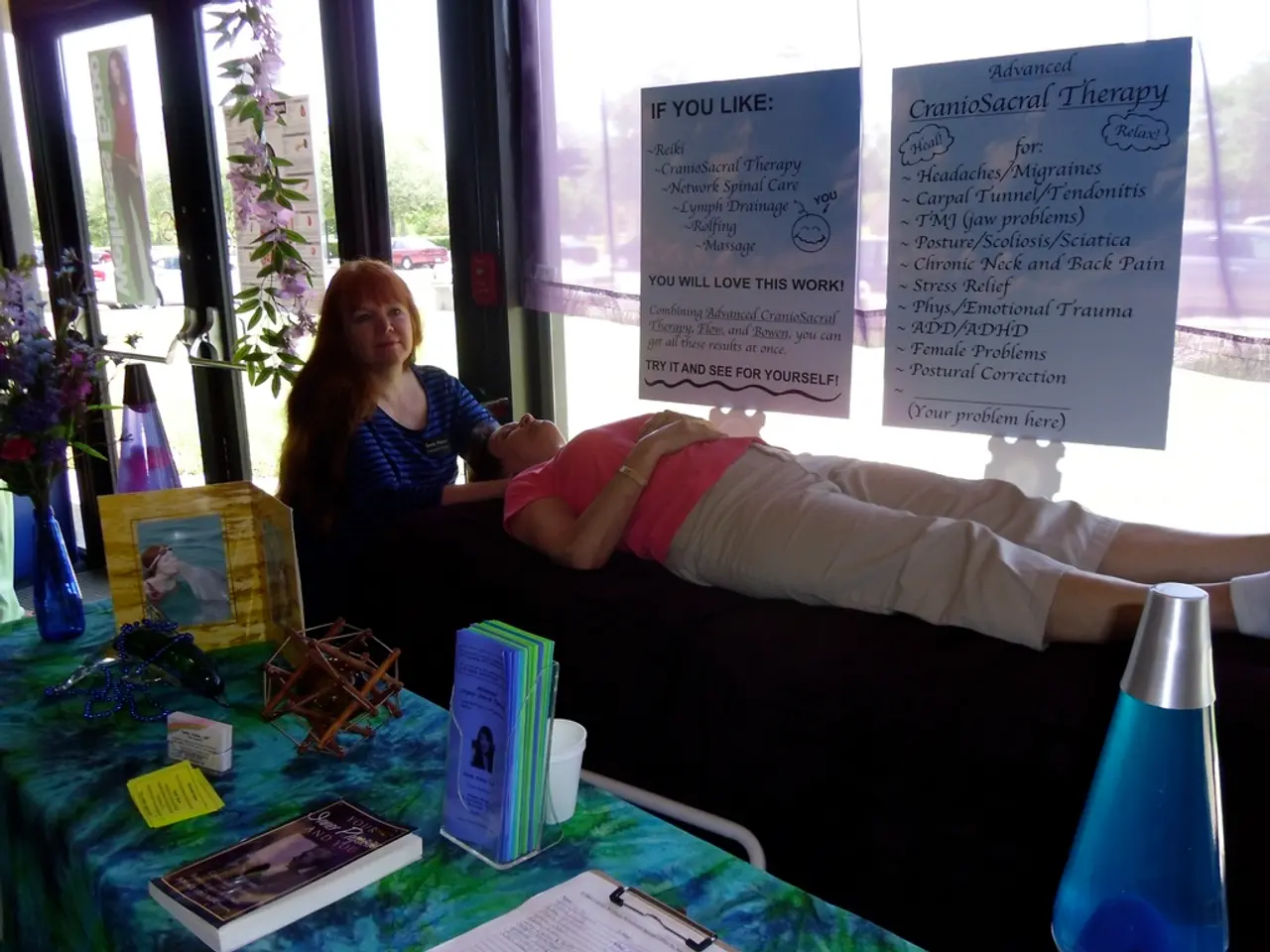Botox: A Treatment for Medical Conditions and Cosmetic Purposes
Treatment for neck spasms with Botox: Efficacy and further details
Botox, scientifically known as onabotulinumtoxinA, is a versatile drug approved for several medical conditions and cosmetic purposes. This drug, and its potential biosimilars, can help alleviate symptoms of various ailments, offering hope to many.
Approved Medical Conditions for Botox and Its Biosimilars
Botox is currently approved for conditions such as overactive bladder, neurogenic detrusor overactivity, chronic migraines, spasticity, cervical dystonia, severe axillary hyperhidrosis, blepharospasm, and strabismus. While there is no specific mention of approved medical conditions for Botox biosimilars in the provided sources, it is expected that they will have similar indications once approved.
Differences Between Botox (Therapeutic) and Botox Cosmetic
While both forms contain the same active ingredient, onabotulinumtoxinA, they are intended for different uses. Botox Therapeutic is used for various medical conditions, while Botox Cosmetic is approved for reducing facial lines and wrinkles.
Side Effects and Safety
Common side effects for both forms include bruising, swelling, and redness at the injection site. In cosmetic use, side effects like eyelid drooping and brow drooping may occur, while in therapeutic uses, more systemic or localized effects related to the targeted condition might be seen.
Biosimilar Side Effects and Use
Biosimilars, like letibotulinumtoxinA (Letybo), approved for cosmetic use, have similar side effects to Botox Cosmetic. No specific biosimilars are mentioned for therapeutic use in the provided sources.
Important Considerations
Before receiving Botox, it's essential to discuss any medical conditions, allergies, or other factors with a healthcare professional. It's unlikely that Botox will make cervical dystonia worse, but symptoms may return between injections. The cost of Botox varies according to factors such as treatment regimen, insurance plan, and location of injections.
How Botox Works
Botox works by stopping nerves from functioning by preventing the release of acetylcholine, a neurotransmitter. This inhibits muscle contractions, providing relief from symptoms associated with the approved medical conditions.
Safety Precautions
Botox comes with serious risks, including the potential for allergic reactions and the risk of toxin effects spreading, potentially causing life-threatening breathing or swallowing difficulties. It's crucial to use Botox only for the FDA-approved conditions to minimise these risks. Botox has a boxed warning due to the risk of toxin effects spreading.
In summary, while Botox and its potential biosimilars share the same active ingredient, their intended uses and side effects can differ based on whether they are used for medical or cosmetic purposes. Comprehensive data on biosimilars specifically for therapeutic use is not detailed in the provided information. Always consult with a healthcare professional before deciding on Botox treatment.
- Botox, a versatile drug, is used for various medical conditions and cosmetic purposes, providing relief to numerous treatment-seekers.
- Approved medical conditions for Botox include overactive bladder, neurogenic detrusor overactivity, chronic migraines, spasticity, cervical dystonia, severe axillary hyperhidrosis, blepharospasm, strabismus, and more.
- While the specific medical conditions for Botox biosimilars are not mentioned in the provided sources, they are expected to have similar indications once approved.
- Botox Therapeutic is used for medical conditions, while Botox Cosmetic is for reducing facial lines and wrinkles.
- Common side effects for Botox include bruising, swelling, and redness at the injection site, with eyelid or brow drooping possible in cosmetic use and more systemic or localized effects related to the targeted condition for therapeutic uses.
- LetibotulinumtoxinA (Letybo), a biosimilar, has side effects similar to Botox Cosmetic but no specific biosimilars are mentioned for therapeutic use in the provided sources.
- It's essential to discuss any medical conditions, allergies, or other factors with a healthcare professional before receiving Botox.
- The cost of Botox varies based on factors such as treatment regimen, insurance plan, and location of injections.
- Botox works by preventing the release of acetylcholine, a neurotransmitter, stopping nerves from functioning and inhibiting muscle contractions.
- Botox comes with serious risks including allergic reactions and the potential of toxin effects spreading, causing life-threatening breathing or swallowing difficulties.
- To minimize these risks, it's crucial to use Botox only for the FDA-approved conditions.
- Before deciding on Botox treatment, consult with a healthcare professional for comprehensive information on benefits, risks, and potential interactions with other health and wellness practices such as fitness and exercise, nutrition, and therapies and treatments.
- Botox can potentially be beneficial for managing chronic diseases such as respiratory conditions, digestive health issues, and even some skin conditions, neurological disorders, and cancer, making it an important aspect of health-and-wellness conversations.




